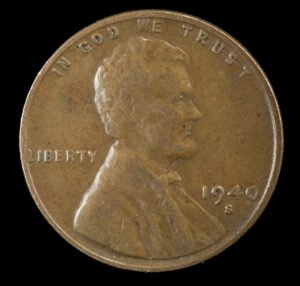Do you have an old, worn-down dresser in your bedroom? Then, you may strike it rich! You may ask why! Well, certain dresser styles are ancient, rare, and handmade. And this makes them precious and popular in the Boho-chic homes of today!
So, your dresser style may be what collectors and homeowners are looking for!
Today, I’ll discuss old dresser styles and their highlighting features to help you identify your closet and its costs. Shall we start?
Key Takeaways
- You can identify dresser styles based on their carvings, legs, materials, and panels.
- Branded Hepplewhite and Sheraton dressers have more gold and metal inlays. Plus, they are more nature-themed and have intricate handles and locks.
- Queen-Anne, Victorian, and Edwardian dressers will give you vintage, colonial decor. Needless to say, they look more royal and have rough, handmade finishes.
- Art-Deco or Rococo dressers are contemporary. So you’ll spot them by their highly functional designs, rounded edges, and porcelain figures. Want to know some more tips to identify them better? Then, jump in right away!
Vintage Dresser Styles Based on Age and Era
The make and materials of different closets change with age! These differences result in various dresser styles, which impact their worth.
Want to learn more about these styles? Let’s check it out below!
1. William & Mary Dressers (1685 – 1720)

William & Mary dressers are just a mix of Italian and French styles. They are short and sturdy like French dressers but have carvings like Italian ones. You can also spot them with their floral or silver work and aged veneer sides.
But what sets them apart are their local wood – Oak or Pine panels and Dovetail joints. These ancient chests are handmade – without any screws or glues, maker’s marks, or brands, which makes them rare and wanted globally!
How Do You Spot William & Mary Dressers?
- 2 – 3 drawers, chiseled drawer tracks, and polished front panels. You can also notice some curved spindles or gold moldings on the faces
- Rectangular shape, with arched and stretched bottoms
- Thin, pipe-like legs with round bases
- Aged brown, beige, or black sides with a stained or varnished finish
- Dove-tail joints with thin handmade boards and panels
- Tear drop-style brass handles and round locks.
| Average Value | $10,000 – 60,000, depending on the wood used |
| Prominent Makers | William & Mary, Kittinger Furniture |
Check if your dresser has uneven drawers and handles for high value.
2. Hepplewhite Dressers (1790 – 1815)

Hepplewhite dressers evolved during the Industrial revolution and have minimal inlay patterns and thin panels. You can also expect short drawers and Birch or rosewood panels with them.
Hepplewhite dressers value more because of their curves, types of wood, and high-end looks. You can also look for painted designs, burl veneers, and maple seams for better value.
How Do You Identify a Hepplewhite Dresser?
- 4-5 drawers with curved carvings and feathers, curved front boards, and wood pegs at every joint
- Rectangular or squarish shape with curved or bulging front faces
- Fluted or flat legs with a diagonal profile and curved rests
- Stained brown, white or gray sides or painted red, blue, and green walls
- Dovetail joints with thin adhesives or sealants in between
- Oval or squarish handles and flower or animal-shaped locks
| Average Value | $2,000 – 10,000, depending on age and shape |
| Prominent Makers | Kittinger Furniture, Henkel Harris |
Check the dresser’s material and finish carefully. Usually, dressers with Maple or Satin seams are rare and precious.
3. Sheraton Closets (1700 – 1820)
Sheraton closets look like computer tables with side drawers and desks. You can easily spot them with their colored wood, patterns, and silk sideboards. Or, you can look for floral ribbons and feathers along their seams and front faces.
Sheraton closets are foreign-manufactured in Britain or Europe. So, needless to say, they’re precious and trendy. And you can also find some secret shelves and racks that up their value!
What to Look for in a Sheraton Dresser?
- 5-6 drawers of uneven heights and widths with low-relief carvings, painted designs, and veneers
- Raised cuboidal shape with curved desks and front panels
- Slim, straight legs with round brackets or bases under them
- Stained brown, reddish oak or beige sides with thick, dark brown borders
- Satinwood, Birch, Ash, Tulip, or Rosewood sides with horizontal grains
- Abstract hardware shapes, occasionally with lion’s head, stamped or urn shapes
| Average Value | $2,000 – 12,000; varies with wood and size |
| Prominent Makers | Berkey & Gay, American Drew |
Pick Sheraton dressers with vertically grooved legs and borders for high value.
4. Empire Chests (1825 – 1850)
Empire dressers, as the name suggests, are one of the heaviest dressers from Ancient America. They have clean, squarish surfaces and sides. So they look more masculine and royal.
It’s also common for these dressers to have two short columns on either end with shallow grooved or threaded borders. Some small vines and flower carvings could also grab your attention.
How Do You Identify Empire Dressers?
- One big top drawer and 4-5 smaller drawers, thick borders, flushed edges, and horizontal grains
- Simple, cuboidal shape with minimum lines and curves
- Claw or bun-like feet with grooved surfaces and metal bands
- Pine, Poplar, Maple, or Cherry construction
- Book veneers and finished, dovetail joints
- S-shaped or round, glass or metal hardware and simple, square locks
| Average Value | $500 – 1200; varies with the number of drawers |
| Prominent Makers | Thomasville, Villa Garnelo |
Examine the handle’s materials and finish carefully. Usually, metal or cast-iron handles are old and precious.
Antique Dresser Styles Based on Design & Decor
Furniture styles change with the region and its cultural influences. And dressers are no exception! So, let’s look at dresser styles with different designs:
5. Queen Anne Style

Queen Anne dressers are classical or colonial-style pieces with large, arched mirrors. You’ll notice that they are more feminine and have a lot of curves and seams. Plus, they will have wider desks, delicate footrests, and more leg space.
You’ll usually get these dressers in warm Cherry and Maple finishes. But you can also look for black stains or lined textures to spot them easily. Besides, you can also find compact features like tilt desks and hinges with them.
What Other Features Does a Queen Anne’s Dresser Have?
- 5 – 6 short, multilayer drawers with curved elements and floral inlay features
- Yoke-shaped rails and fan or shell carvings on their surfaces
- Raised, cuboidal shape with pointed arches and bevels
- Thin pyramidal or ‘Cabriole’ legs with a ball or pad foot
- Red, Orange, or Vermillion sides with Light Gray, White or Silver borders
- Tongue and groove or Dovetail joints with finished seams and edges
- Pointed or bell-shaped handles; No locks
| Average Value | $2,000 – 10,000, depending on age and stain |
| Prominent Makers | American Drew, Henkel Harris |
Examine the dresser legs and check their shape carefully. Usually, pyramidal legs are vintage, whereas spade ones are cheaper.
6. Victorian Style

Victorian dressers are slightly dark and heavy. You may find some carvings on them, but they look more formal. These are also taller, about 6 feet, and might have drop-down mirrors and inlays.
A lot of people find Victorian dressers to be over-adorned. But I think that they are pretty royal and contrasting with their dark walls and gold borders.
Besides you’ll also find colorful, floral fabrics and designs on their tops. So, they’ll look high-end, simply perfect for colonial or Baroque bedrooms!
How Do You Identify a Victorian Dresser?
- 3-4 drawers with fruit, vine, or floral ribbons, gold-polished or chrome drawer borders
- Walnut or Mahogany sides with animals, birds, or other nature-inspired carvings
- Simple rectangular shape with flat tops and straight lines
- Thick, spindled legs with curved bases and flat tops
- Crude wood or painted beige, blue, and green walls with white or brown tops
- Tear-drop or simply, wavy hardware and oval locks
| Average Value | $1,000 – 4,000, depending on the size |
| Prominent Makers | Lexington, Howard & Sons |
Rub all the intricate carvings with a soft-bristled brush and oil them for more shine.
7. Edwardian Dressers

Edwardian dressers are like a mix of old dressers and new, untried designs. So, you can expect exotic bamboo fillings, mirrors, and paintings with these. They are usually bright and offer lovely new-classical decor!
Edwardian dressers also use various wood accents and stains in design. So, you’ll be able to spot them with their high-contrast panels, borders, and natural dyes. And all this decoration makes them even more precious today!
What Else Defines Edwardian Dressers?
- 5-6 drawers divided symmetrically into two sections, thick drawer tracks and thin front and back panels
- Simple mahogany framework with geometrical or matt-like inlays
- Short, box-like shape with thick borders and side grooves
- Cubical, tapering legs with round, bent bases and footrests
- Light brown, beige, tan or buff walls with dark brown or orange borders
- Golden push-pull handles or round knobs and locks
| Average Value | $1,000 – 3,000, as per the stain and carvings |
| Prominent Makers | Herts Brothers, Maple & co |
Rinse the dressers with diluted vinegar or dish soap to avoid any staining their light surfaces.
8. Art-Deco Closets

Do you have a closet with box-like frames, lacquer borders, and round edges? You may be looking at an Art-Deco dresser! These dressers are decorative and have geometric bands at the borders. They may also have plastic or mirror fronts, but that depends on the brand.
But what makes them unique are the shiny jade or silver borders and iron inlays. So, you’ll find them very shiny and modern. Plus, they’ll use new concrete or acrylic bases and have a matte finish.
How Do You Spot Art-Deco Dressers?
- 4-6 drawers with rounded edges, curved veneers, thick dark lacquer, or varnish along their edges
- Exotic wood construction with lemon, ebony, or zebra wood trims
- Simple rounded rectangle shape with a leg space in between
- Flat or slightly curved legs with metal bands or grooves
- Rattan or wicker inlays and bright brown, orange, blue, or white-colored walls
- Screwed joints, machine construction and cased glass infills
- Slender, piped or rounded Brass, Bakelite or Wooden hardware and locks
| Average Value | $1,000 – 12,000, as per the size and material |
| Prominent Makers | Herman Miller, Thomasville |
You can reglaze your Art Deco dressers with Japanese lacquer or wax for a better shine and value.
9. Rococo Dressers

Do you have a vintage dresser with a lot of floral or comical motifs? Then, you just might own a Rococo dresser. You’ll also spot this style with its wavy drawers and eccentric design. And it might even have some Chinese figures and motifs.
Rococo dressers will look more casual and modern in style. They’ll also have a slight ‘freehand effect’ with flowing forms and crude edges. And you can also find some porcelain figures, leaves, and shells on their surfaces.
How to Spot Rococo Dressers?
- 7-8 small to medium-sized drawers with curved sections
- Golden borders, porcelain figures, and flower frames on the surfaces and gold or silver ornamentation along the edges and inlays
- Birch, Mahogany, Pine, or Maple construction with porcelain carvings and figurines
- Thin and tall legs with bent, horse-shoes bases and leaf designs
- Light or pastel-colored surfaces and white, brown, light green, or mint walls
- Screwed joints but handmade construction and free-flowing edges
- Ornate flower or animal shaped golden handles and kite or circular locks
| Average Value | $2,000 – 3,000 |
| Prominent Makers | Herman Miller, Lysberg Hansen & Therp |
You can coat old dressers with a transparent stain or varnish to save the paintings from peeling and warping.
10. French Provincial Dressers
French provincial dressers are a mix of Rococo, Baroque, and French designs. They have curved bases and rich wood finishes. Also, look for light wood or pine surfaces with dark wood borders to spot them easily.
Overall, French provincial dressers are very rustic and cottage-like. So, you can also find some village elements and grape or sunflower carvings on them. So, they’ll look very welcoming and playful in any ambiance.
How Do You Identify French Provincial Dressers?
- 9-10 drawers with varying sizes and designs. They’ll be quite flat and rectangular but might have curved borders and rolled-up edges at the top
- Birch or Mahogany frames with lighter Pine or Oak inlays and panels
- Taupe, Sage, Gray, Sunny yellow, or Rust panels with dark brown or Walnut borders
- Thick cabriole legs with hoof or curved leg bases
- Checked or Striped inlay patterns with darker stain finish
- Ornate, leaf, or flower-shaped handles and simple, round, or square locks
| Average Value | $1,000 – 5,000 |
| Prominent Makers | John Widicomb, Thomasville |
Check the leg’s base and finish carefully. Usually, hoof or spade legs are old and more precious than simple curved legs.
Tips For Identifying Different Antique Dresser Styles
- Check the dresser for any maker’s mark or dates for better tracking. You’ll usually find these on the seams or the top surfaces.
- Examine if the dresser is hand-cut or machine-cut to track the make. Generally, hand-cut edges will be crude, whereas saw-cut ones will have a smooth finish.
- Pick Art-Deco or Rococo dressers for modern, private spaces. But go with Victorian or Edwardian dressers for a royal finish to your guest and powder rooms.
- Check the hardware of the dresser. Carved, intricate hardware might be old and colonial, but porcelain handles are always new and Art-deco style.
How Do I Identify My Dresser Brand?
You can identify your dresser’s brand by looking at any logos or tags on the panels. You can also check the drawers and drawer tracks for more trademarks and bill stamps.
Where Do I Get Antique Dressers From?
You can get vintage dressers from any local antique shops or auctions. You can even search e-commerce portals like eBay, Etsy, or 1stdibs for more dresser types and styles.
How Do I Identify the Wood of My Dresser?
You can identify the wood by looking at its grains and color. Usually, lighter Pine and Oak wood will have a straight, lengthwise grain, whereas dark mahogany wood might have a curved and flowy grain. You can also take a picture and search for it on Xylorix for better clarity.
Every vintage dresser’s value changes with style and age. But you can identify the dresser style based on its legs, panels, and motifs. Usually, newer Art Deco or Rococo dressers will have more carvings, whereas older ones will be plain.
But is it the same with other pieces of old furniture like sofas and rocking chairs? Jump to our article on ‘How to identify vintage rocking chairs’ for the answer!
Note: This article is intended for informational, educational, and entertainment purposes only. Some images are illustrative and may not represent actual brands, products, or related entities. All trademarks, product names, brand logos, packaging, and other intellectual property referenced remain the exclusive property of their respective owners. Any brand mentions or references are provided solely for descriptive and educational context and do not imply any formal or commercial association.










